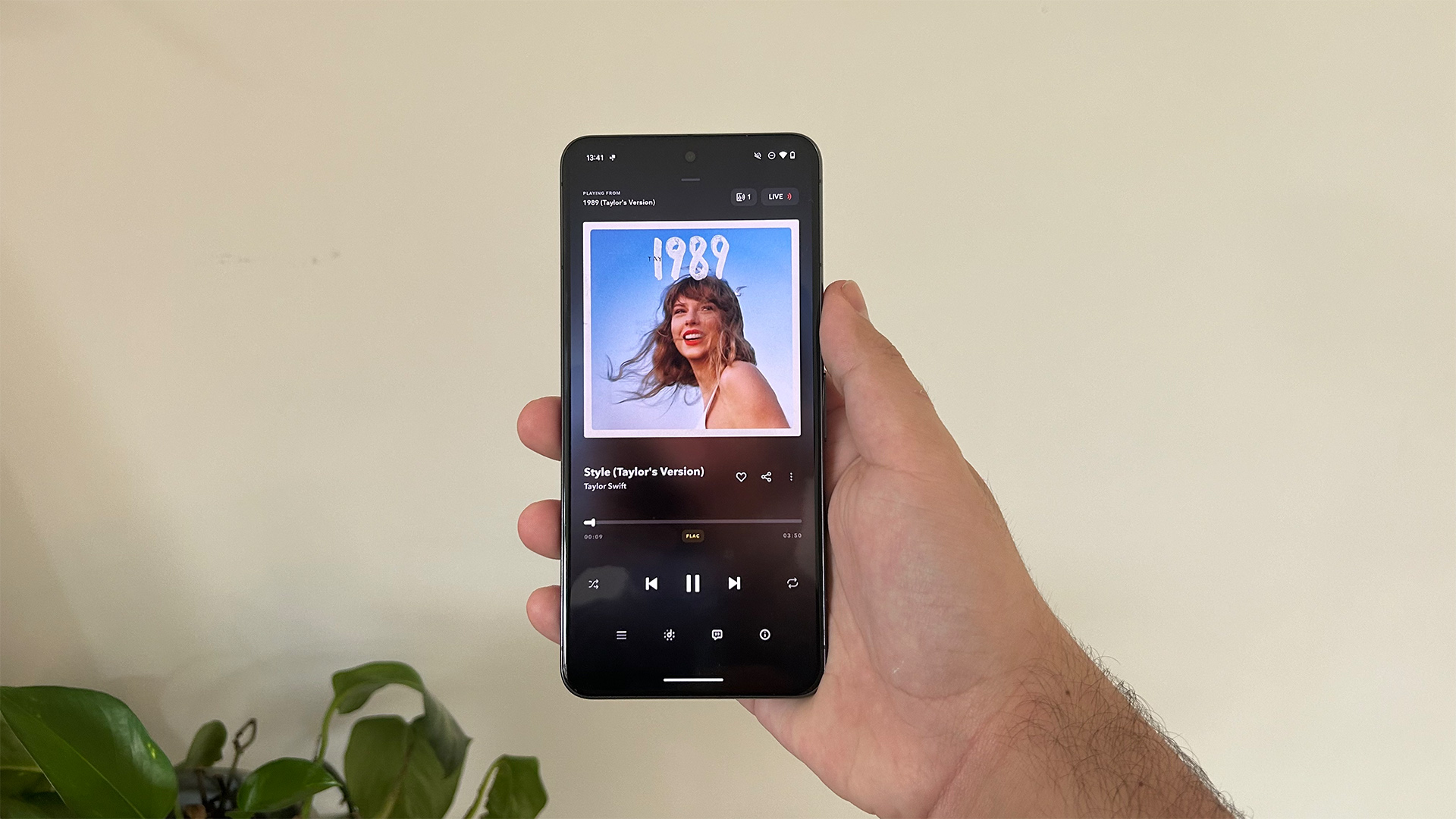
Google returns with its 8th generation flagship smartphone in the form of the Pixel 8 Pro. This year it’s all about AI which, if we’re being honest, doesn’t mean a great deal to those of us primarily concerned with how a smartphone delivers movies and music.
Thankfully, while AI photo and video editing features and AI Google Assistant upgrades seem to be the priority for the search-engine-turned-hardware-developer, dig a little deeper and under all of that are quite a few enticing improvements to picture and sound performance.
While it doesn’t dethrone the top-notch AV experiences we find on the likes of the Apple iPhone 15 Pro Max or Sony Xperia 1 V, the Google Pixel 8 Pro has plenty to offer for quite a lot less than its rivals.
Price
At £999 / $999 / AU$1699, the Pixel 8 Pro undercuts a substantial number of its flagship Android peers. Both the Sony Xperia 1 V (£1299 / $1399) and Samsung Galaxy S23 Ultra (£1249 / $1199 / AU$1949) are considerably more expensive.
If you’re willing to look further than the Android options on the market and don’t mind converting to iOS, you’ll find Apple’s top-of-the-range iPhone 15 Pro Max (£1199 / $1199 / AU$2199) to once again be a pricier option, although you can step down to the smaller iPhone 15 Pro (£999 / $999 / AU$1849) for a more similarly priced option.
There is, of course, the standard Google Pixel 8, which is a fair bit cheaper at £699 / $699 / AU$1199, although the tradeoffs include a lower resolution and smaller screen, one less camera lens and no temperature sensor on the rear – if that’s something of use to you.
Ultimately, it is worth noting that the Google Pixel 8 series is more expensive than last year, though.
Build
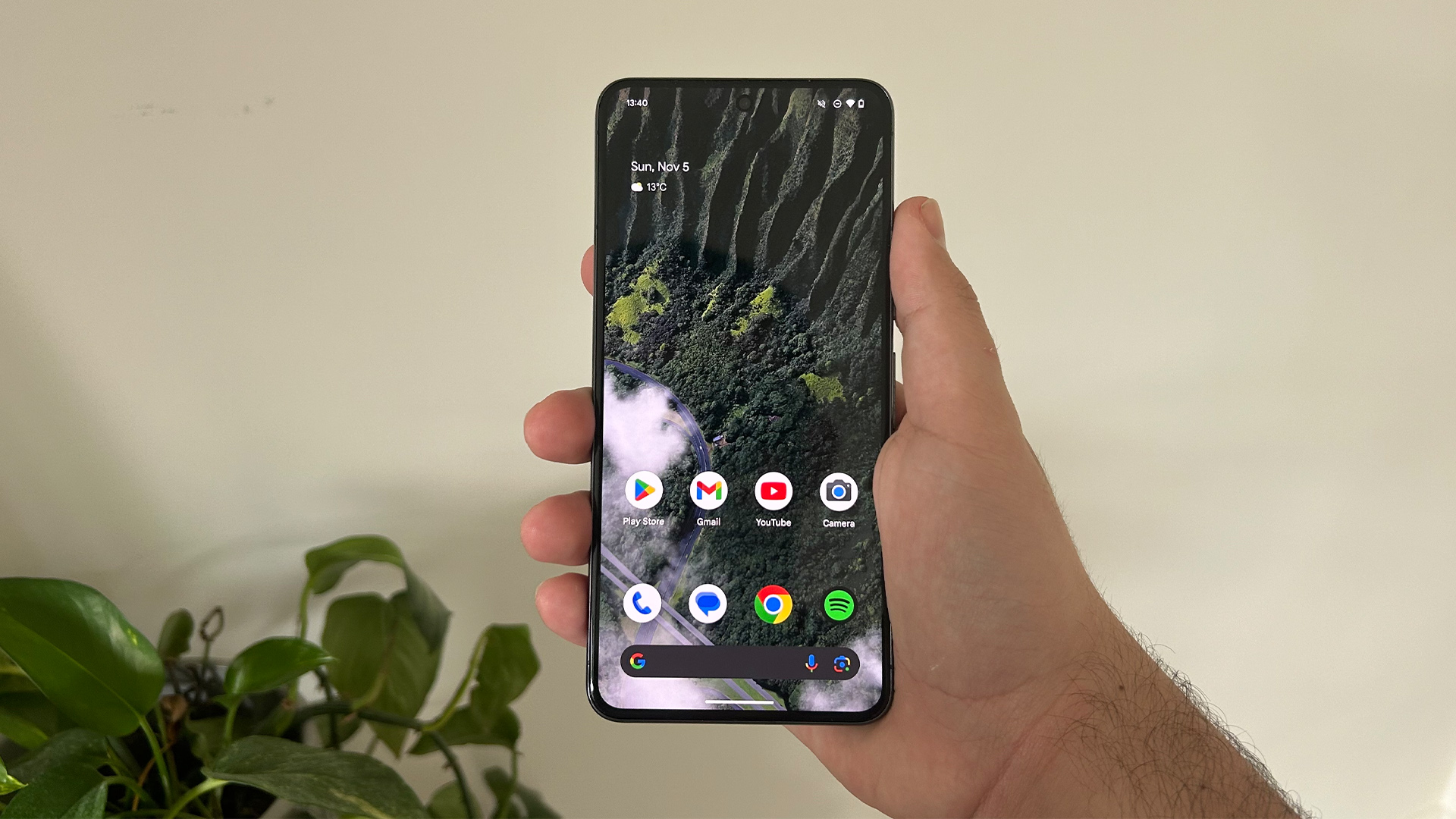
This might just be the best-looking Pixel phone we’ve seen to date, and it feels great in the hand too. Google has swapped out the glossy rear glass panel on the Pixel 7 Pro for a frosted matte glass effect for the Pixel 8 Pro, and it looks mighty fine. This small change has made the device easier to hold and use one-handed, makes pesky fingerprints on the device less visible and it just looks super sleek, especially in the Charcoal colourway that we have here. You can also find the device in a white-gold finish dubbed Porcelain, or a vibrant two-tone blue finish called Bay.

Screen size 6.7-inches
Screen type LTPO OLED
Screen resolution 1344 x 2992
Operating system Android 14
Storage 128GB / 256GB / 512GB / 1TB (US exclusive)
RAM 12GB
Finishes x 3 (Charcoal, Porcelain, Bay)
In contrast to the matte finish on the back of the phone, the Google Pixel 8 Pro features glossy aluminium rails around the edge that seamlessly blend onto the visor-style camera bar on the rear – a feature that’s stuck around since the Pixel 6 series. It’s a design language that grows on us with each revision, with this year’s iteration looking more rounded and fluidly integrated into the build than ever before.
In fact, the device as a whole is a lot more rounded than last year’s Pixel 7 series, with the boxy, squared-off corners of its predecessor now smoothed off in a much more appealing design. The front of the device also ditches the curved display of its predecessor, now using a totally flat 6.7-inch display; while this certainly isn’t a compact device by any means, it is surprisingly easy and comfortable to use.
Looking around the edges of the device you’ll find a USB-C port and sim tray along the bottom, and power and volume keys along the right edge, leaving the other two sides of the device uninterrupted. Unlike other Android devices we’ve tested recently, such as the Sony Xperia 5 V, you won’t find a fingerprint sensor built into the lock button, as it's located underneath the screen instead.
Features
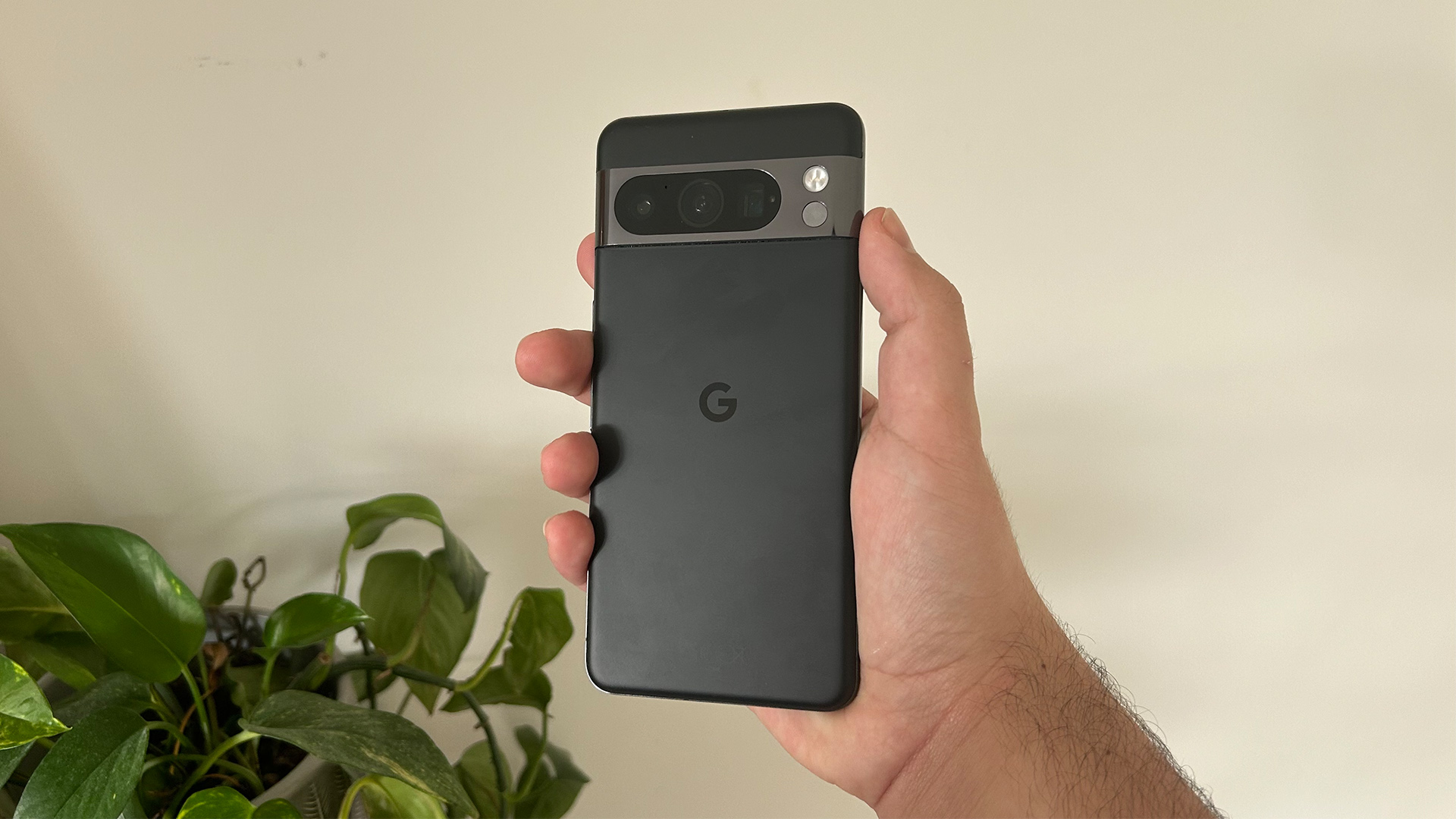
Google’s flagship phone is, of course, filled to the brim with proprietary tech and exclusive features. First up is the new Tensor G3 processor, Google’s in-house developed chip and answer to Apple’s successful A-series chips for iPhones and iPads. In practice, the Pixel 8 Pro runs smoothly in daily operation, and with 12GB of RAM, it feels particularly slick when swiping through the Android 14 operating system.
This slickness may also be at least somewhat due to the Quad HD LTPO 120Hz OLED display, which varies the refresh rate from 1Hz to 120Hz depending on the content and results in scrolling that feels especially fluid. The display is HDR-enabled, too, with support for HDR10+. That should make it ideal for content on Amazon Prime Video, which supports said format, but content from services such as Disney+ and Netflix will playback in standard HDR10 as the Pixel 8 doesn't support the Dolby Vision format that they use.
A lot of the upgrades with the Tensor G3 processor centre around AI, which as well as making the Google Assistant a bit brighter, adds some new features to the camera. Most notable is the option to combine multiple group shots and individually swap faces to ensure everyone looks as Instagramable as possible. Is it slightly unsettling? Yes, but it's also handy at times.
It should come as no surprise that the Pixel 8 Pro is overall another excellent performer in the photography department. With a triple camera arrangement comprising a 50MP main lens, 48MP ultrawide and 48MP telephoto, the 8 Pro delivers sharp, bright, detailed and punchy pictures that impress. The photos aren't quite as natural as those of an iPhone and there aren’t as many pro tools available as on the Sony Xperia 5 V, but the Pixel 8 Pro is an ideal point-and-shoot solution that wants to provide you with good-looking snaps to plaster across social media.
Moving onto audio features, the Google Pixel 8 Pro offers Bluetooth 5.2 with support for the LE and aptX HD codecs, as well as A2DP. You won’t find support for Dolby Atmos, though, which is a shame as it means you won’t be able to take advantage of Atmos music on Tidal or Atmos movies from Netflix and the like.
The Pixel 8 Pro features a 5050mAh cell and a host of impressively quick charging options. This includes up to 30W wired, 23W wireless and reverse wireless charging, the last of which means you can juice up other Qi-compatible devices by using this phone as a wireless charging pad. In practice, the 8 Pro is a dependable performer that makes it through a day of fairly intensive use without any issues, although there are useful battery-saver options that kick in when needed.
Picture
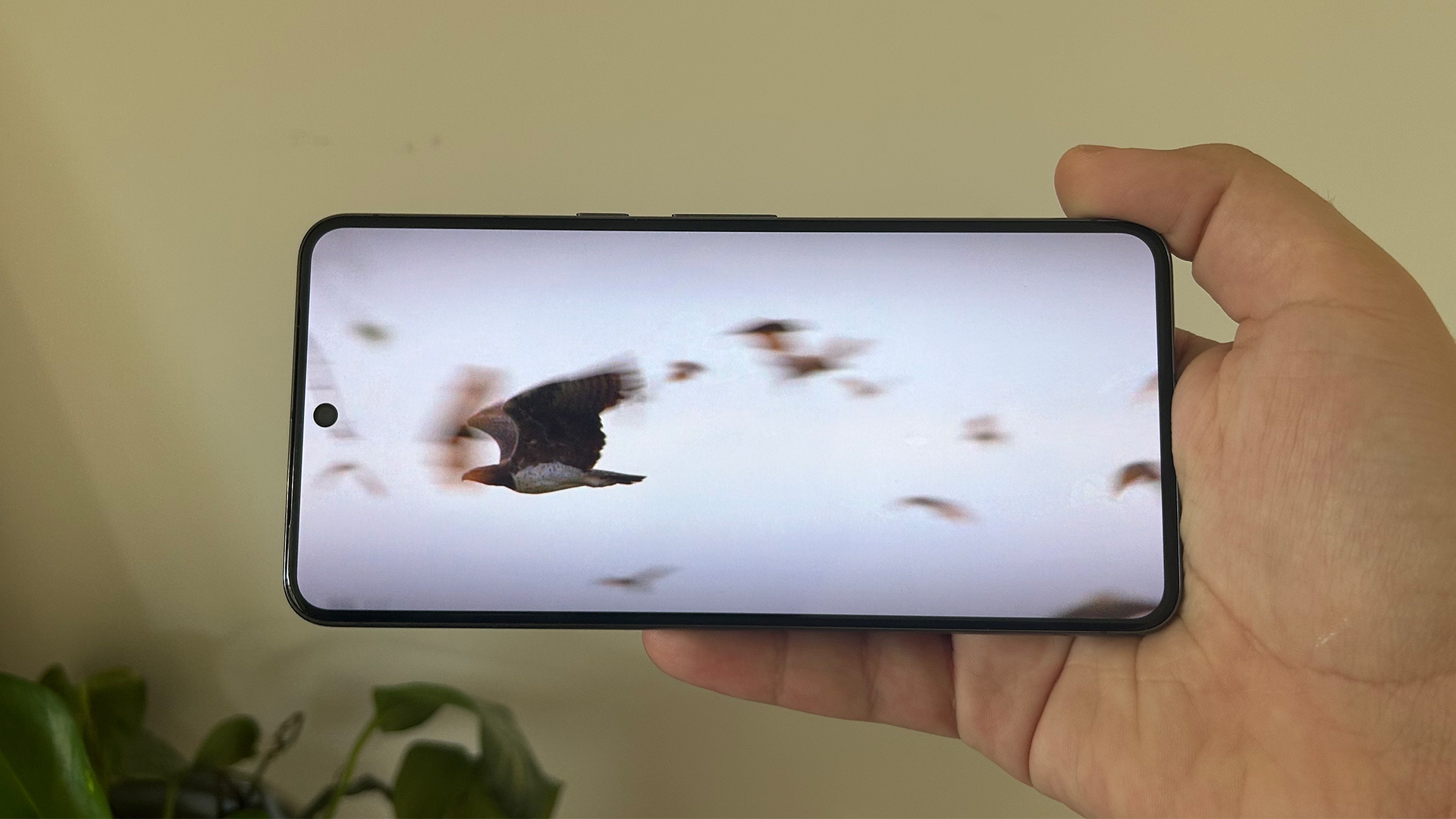
The Pixel 8 Pro is a strong all-rounder in the picture department but it doesn’t go above and beyond in any way. That’s not to say it doesn’t impress visually, as there’s lots to like here, but we have seen more cinematic smartphones of late that cost roughly the same.
Starting with Rogue One: A Star Wars Story on Disney+, we use the tried-and-true opening shot to allow for the OLED panel to flex its muscles when it comes to black depths. Unsurprisingly, it handles the infinite void of space with convincingly deep black levels and there are plenty of glistening stars for contrast. While it's not quite as impactful as the recently reviewed Sony Xperia 5 V, it’s a solid start for the Pixel.
Moving onto motion, the Pixel handles the speeding Imperial shuttle’s descent through the atmosphere and along the surface of the planet with judder-free ease, and even the rhythmic crashing of waves onto the black sandy beach is smooth and perceivably stutter-free.
The Pixel goes on to demonstrate its sharp and crisp image as the villainous Director Krennic confronts Galen Erso during the opening scene of the movie. Here we see crisp details in the skin and clothing textures of the characters, in addition to well-defined outlines of subjects on screen. Overall it’s well-rounded and detailed.
Switching over to Drive on Netflix, we unfortunately come across the Pixel’s greatest weakness: shadow handling. The phone lacks practically any sense of subtlety in dark scenes, as demonstrated by the opening getaway chase. Despite it taking place at night with minimal illumination from streetlights, the display seems to highlight subjects with a glowing spotlight effect, negating most of the intended shadow effects. When the display does concede and allow for shadows to appear, there is little to no detail or gradient from light to darkness, so characters are either submerged in bright light or pitch-black darkness.
Moving into something brighter and bolder with Netflix's Our Planet 2 highlights how the Pixel is also slightly over-enthusiastic when it comes to colours. Foliage takes on a somewhat neon-green hue, for example. Bringing the Sony Xperia 5 V back into play for comparison, we find that it delivers a more balanced approach to colours, with a vibrant touch that is underpinned with a supreme naturalness, making trees and rainforest shrubbery appear bold and vivid yet not oversaturated.
Sound
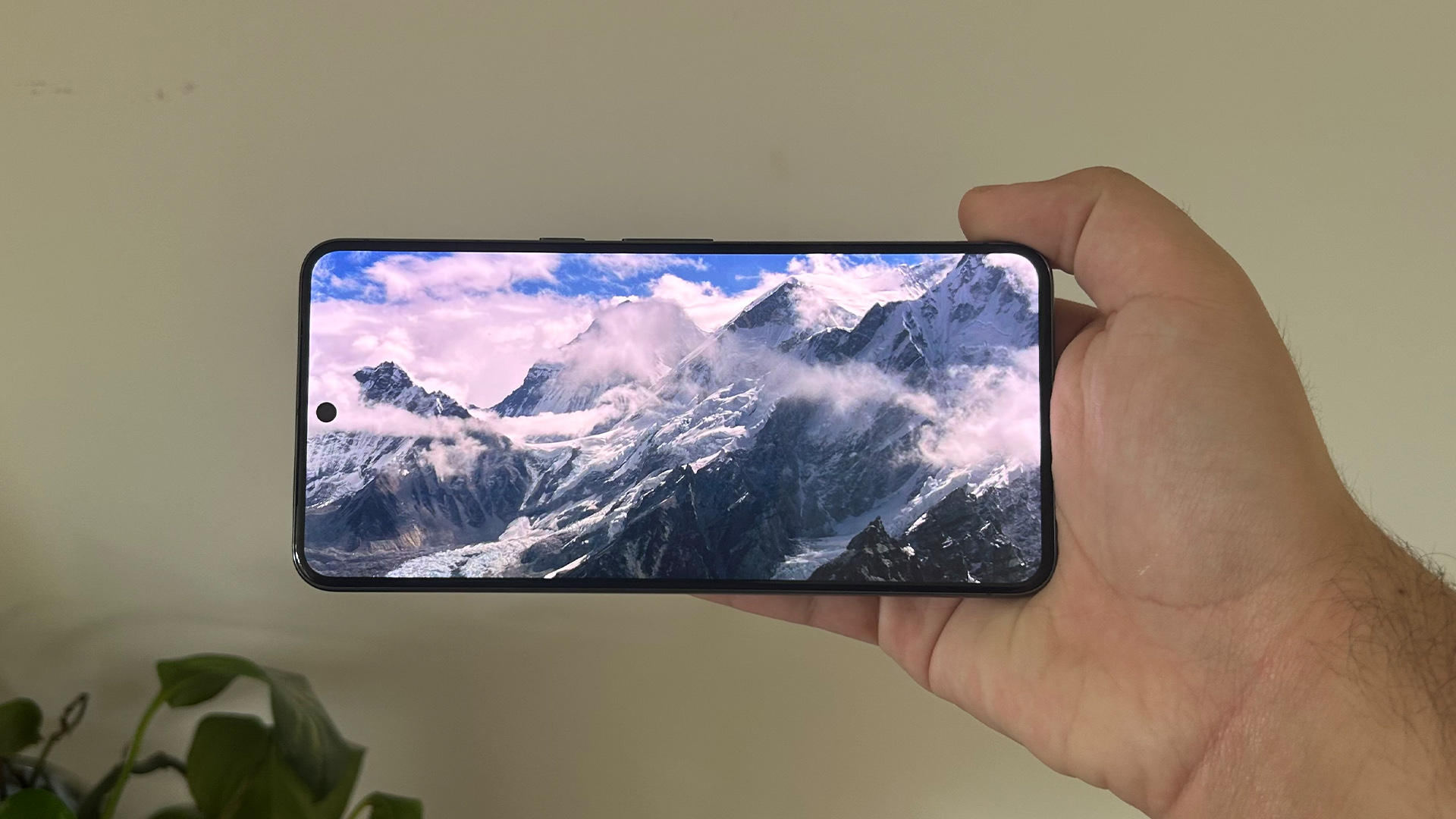
This is by no means the first Pixel phone (or portable Google device for that matter) that we've tested, but it sure is the best-sounding. After a run of similar-sounding devices in the form of the Pixel 7, Pixel 7a and Pixel Tablet, Google has finally injected some life into its sonic presentation. While it's not entirely revolutionary, it is an appreciable upgrade and one we notice almost immediately upon listening to the 8 Pro.
Tuning into Exile by Taylor Swift and Bon Iver via Tidal, we're met with a warmer, richer sound than its predecessor. There's a touch more detail and definition in the piano notes, while the earnest vocals of Bon Iver are more engaging and textured than before. It's also more dynamic, with the duet section of the track in which Swift and Bon Iver retaliate emotionally charged lines coming across with plenty of punch.
There's still room for improvement, though. Switch to Phoebe Bridgers' Kyoto and we find that timing is something of an issue. The Pixel doesn't strike notes as precisely as it could, leading to a lack of rhythmic drive. Bringing the Sony Xperia 5 V as a comparison once again, we find it to be much snappier and a touch more engaging as a result.
Should you be forced to listen to the phone out loud, the stereo speakers on the Pixel 8 Pro are actually quite good. Dialogue is clear, they go quite loud and the Rogue One's cinematic score has a semblance of oomph behind it. That being said, they still don't produce the most spacious and full-bodied sound imaginable. We'd recommend pairing the Pixel 8 Pro with a good set of cans for best results.
Verdict

While the Pixel 8 Pro doesn't fully excel at picture and sound performance, Google has made an effort to improve both areas and it shows. While it hasn't shouted about audio improvements, they're certainly there, and the screen gets all the basics right, too, with enhanced brightness the cherry on top.
Ultimately, a smartphone doesn't live and die by its picture and sound performance, as you have to use it for much more than that – and that's where the Google Pixel shines. It's slick, well put together, and has a boatload of features that make it feel like a true flagship-level phone.
But picture and sound are what we care most about, and a lack of subtlety holds the Pixel 8 Pro back from true greatness. The heavy-handed approach to shadows and colours plus a sluggish take on musical timing mean that the cheaper Sony Xperia 5 V is the better buy for portable movie and music use.
SCORES
- Picture 4
- Sound 4
- Features 5
MORE:
Read our review of the Pixel 7a
Also consider the OnePlus 11 5G
Read our Sony Xperia 5 V review







